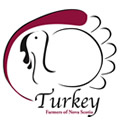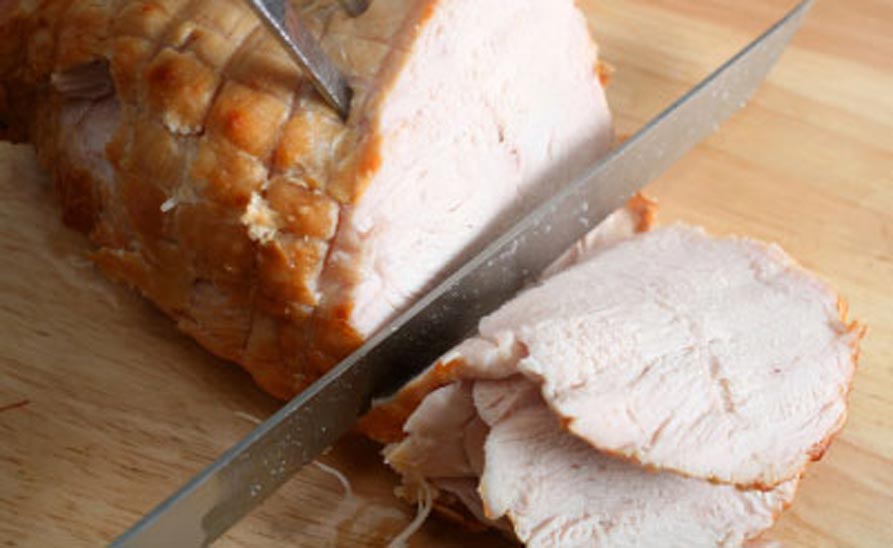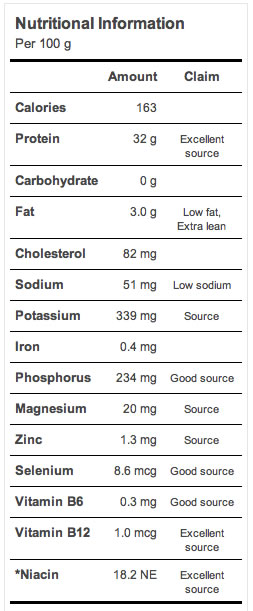Interesting Facts:
Male turkeys are called toms, females are called hens, and the young are poults. The Canadian Turkey Marketing Agency c.o.b. Turkey Farmers of Canada, established in 1973, is charged with administering the orderly marketing system for turkey in Canada. Its primary purpose is to provide price and supply stability by gearing production towards market needs. In addition to market analysis, the agency is actively involved in areas such as: research, marketing, food safety, policy development, trade and regulatory analysis.
What are turkeys?
Turkeys are large domesticated birds with white plumage that are raised for meat.
Where are turkeys produced in NS?
Kings County has the most turkey producers, followed by Annapolis, Lunenburg and Cumberland Counties.
How many turkeys do we produce?
Nova Scotia has 19 registered turkey growers, who produce 4,579,993 turkey hens in 2012. The farm gate value of Nova Scotia turkey in 2012 was $9,147,567.17
How are turkeys produced?
Hens are bred/artificially inseminated to produce fertilized eggs. The eggs are incubated for 26 days then moved to a hatchery for 2 days where they hatch. The best temperature for good hatchability is around 37 degrees Celsius with a relative humidity of 75% to 80%. Turkeys are sold to producers as day old poults and shipped to farms in temperature-controlled trucks. Turkeys are grown in large, modern poultry barns that are heated and ventilated to provide the proper temperature, humidity, and air circulation. Where they roam freely raising turkeys indoors protects them from predators and helps prevent illness. In the barn they are placed on litter made up of wood shavings. At a day old, they weigh 65 grams. The hens are grown to lower weights and will reach 5.9 to 8.7 kilograms in 11 to 15 weeks, and the toms, grown to larger weights, will weight 15.7 to 21.3 kilograms in 18 to 24 weeks. Generally, the turkeys grown in NS tend to be in the lower weight category. Some turkeys are sold at 5.5 kilograms at 11 weeks. These are known as broiler turkeys. Tom turkeys require 2.3 kilograms of feed per kilogram of weight gain.
What happens after turkeys leave the farm?
When turkeys are ready for market they are trucked to a primary processing plant. Once processed, they are packaged or sent to be further processed into turkey products. Federal inspectors inspect each bird that moves through the processing plant to ensure it is safe for human consumption. The turkey products are then sent to retail outlets, institutions, hotels, or restaurants. It should also be noted that turkeys are not given hormones.
How are turkeys used?
Turkey used to be consumed largely as a seasonal favourite at Easter, Thanksgiving and Christmas. Today, not only do people enjoy the whole turkey on these occasions, but year round for everyday meals. Turkey is now offered in further processed products such as fresh cut up segments and ground turkey, as well as convenience packaged frozen products. These further processed products have resulted in a more even distribution of demand for turkey throughout the year, so that turkey is becoming less of a seasonal commodity. Turkey meat is low in cholesterol and fat.
What challenges do turkey producers face?
Keeping a healthy and disease free environment for turkeys is a challenge that is becoming more and more important. Due to better breeding and a higher degree of nutrition turkeys grow much faster than they did in the past, and good management on farms is even more critical. A bio security system has to be in place to protect the health of the birds. Food safely is a huge consideration as well, to ensure a safe, quality product. Turkey products in NS are always in competition with other meat products such as beef, chicken and pork. While turkey is a healthy protein source it must be priced competitively or consumers may choose a less expensive alternative.
Who’s involved in producing turkeys?
- Turkey Breeders
- Hatcheries
- Turkey Producers
- Equipment Suppliers
- Feed company nutritionists
- Field workers
- Transport companies
- Processing companies
- Retail groceries
- Hotels and restaurants
- Pharmaceutical companies
- Provincial animal health veterinarians
- Federal government inspectors



